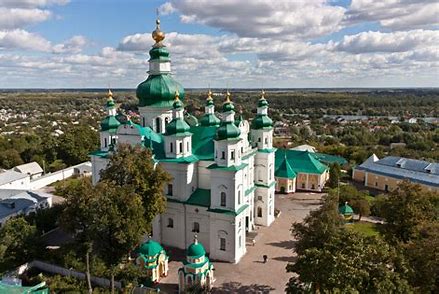UKRAINE: HISTORICAL COMPARISONS
by Jeemes Akers
“At the heart of the Ukrainian crisis lies a fundamental question about the nature of history and the nature of humanity: is change possible? Can humans change the way they behave, or does history repeat itself endlessly, with humans forever condemned to re-enact past tragedies without changing anything except the décor?”
Yuval Noah Harari[1]
Like many of you, I suppose, I’ve been captivated by Russia’s invasion of its sovereign neighbor Ukraine: events like that are not supposed to happen in our modern, “rational actor,” interconnected world. I’ve been reading 10-20 articles per day relating to the invasion—many focusing on Vladimir Putin’s motivations, Russian military capabilities, the brave Ukrainian resistance against impossible odds, and the nature of Beijing’s support for Putin (with an eye to its own future military resolution to the “Taiwan issue.”). I’ve limited my television viewing of the events unfolding on the ground in Ukraine (many playing the same looping footage of apartment buildings hit by artillery shells, drone footage of destroyed Russian tanks, and media portrayals of the desperate plight of mostly female refugees trying to leave the country, an exodus now over three million according to UN estimates).
The bottom line doesn’t change no matter what the channel or platform: war is hell.
Without a doubt we are living in a time of rapid change and, perhaps, the emergence of a new global order. Consider the following. Today, (Wednesday March 16, 2022), as I write this missive, Ukrainian President Zelensky in an unprecedented virtual address to the U.S. Congress attempted to pressure U.S. President Biden into help with a no-flying zone as the Russian invasion enters its third week (Zelensky invoked memories of Pearl Harbor and 9/11 in his address, describing Russia’s invasion as “terror not seen in Europe for 80 years”). Later, during an interview with Lester Holt on NBC Nightly News, Zelensky warned that World War III “may have already started.”[2] (I suggested the same possibility to my history students during my last teaching semester at CofO: we are in a war, but it is so different that we don’t recognize it). At the same time, Russia’s President Putin addressed his country saying the West’s “attempt to have global dominance” is coming to an end and that the Russian citizens were fighting for their sovereignty and “the future of our children.” (He made no mention, of course, of an estimated 15-20,000 Russians arrested in various cities for protesting the war or the battlefield loss of at least four generals). The next day, Putin—using Stalinesque-type language—ominously warned he would cleanse his country of “scum and traitors” he accused of working covertly for the U.S. and its allies.[3] Then, to celebrate the eighth anniversary of Russia’s annexation of Crimea, Putin staged a huge patriotic rally—complete with a technical glitch—and lavished praise on the Russian soldiers and railed against the “neo-Nazis” in Ukraine, in a rare public appearance.[4]
Behind the scenes, meanwhile, a hybrid cyberwar between the two countries continues to grow, joined recently by the shadowy cyber activist organization Anonymous (which asserts it has almost 8 million followers, adding to its ranks more than 500,000 since the invasion began) claiming responsibility for disabling prominent Russian government, media and corporate websites.[5] In the meantime, Ukrainian cyber hackers (both at home and in the diaspora abroad) continue their attack on Russian military and civilian sites. This cyberwar is spilling over: Israel claimed it was hit by the largest cyberattack ever, a massive DDoS cyberattack (denial-of-service cyberattack where a network or server is overwhelmed by a flood of internet traffic) linked by Israeli authorities to hacking groups in Iran such as Black Shadow;[6] and U.S. cyber authorities are bracing for future attacks.
There is so much disinformation and misinformation floating about that it is becoming harder to separate real news from narrative spins designed to evoke pity or hatred.[7] Topping the list for me: social media claims that all the stories relating to the Ukrainian invasion are a hoax;[8] so-called reports that the Russian Army will completely collapse in a matter of days;[9] Russian intelligence claims that the “special military operation” in Ukraine preempted a Chinese invasion of Taiwan; video “deepflakes” targeting both Putin and Zelensky;[10] Russian authorities refusing to shut down the social media platform Telegram (allowing perhaps 40 million Russians to access non-Russian news);[11] and/or, a deliberate message from God,[12] or the third prophetic prong of the Fatima revelation from the Virgin Mary to three Portuguese shepherd girls in 1917.[13]
Hard to top that, huh?
In the economic realm, the sanctions and global market repercussions may accelerate the end of the U.S. petrodollar era[14] as Saudi officials—disgruntled with Washington’s heavy-handed approach in recent years—seeks to price new oil sales to China in yuan rather than dollars,[15] and as India agrees to buy Russian oil at a discount during the sanctions.[16] (Think this doesn’t matter? My cousin just told me that regular gasoline in Manchester, Kentucky is now over $6.00 per gallon).
Oh, and in case you haven’t been watching: weather-related crises continue at a record pace—this week a 7.3 magnitude earthquake hit Japan; a new COVID variant, Omicron sub-variant BA.2, is spreading across the U.S. and cases abroad are increasing (today, Hong Kong is suffering the world’s highest COVID-19 fatality rate, and China, despite draconian lockdown and mask strategies, is reportedly suffering the highest level of COVID-19 cases ever, spread across 27 provinces and cities since the start of this month);[17] supply chain issues and the “mass resignation” continue in this country; CDC officials report, but can’t explain, an alarming—and unprecedented—rise in deaths among Millennials, ages 25-40, over the past year (CDC reported it as a “Vietnam War event” with over 61,000 excess deaths, an 84% increase in excess mortality);[18] and, epidemics of opioid use, suicide and STDs continue to grow at unprecedented rates.
Sigh.
Welcome to the “New World.”
These days, military experts in the West have really been piling on the Russian army for its poor performance in the first three weeks of the Ukraine invasion, despite the expenditure of billions of dollars over the last decade to restructure its military into a smaller, better equipped and more professional force.[19] As one military expert quipped: “Russia has tried to create a large modern army, [but] the part which is modern is not large, and the part which is large is not modern.”[20]
Most experts cite the following reasons the Russian war machine is now bogged down: the deployment of units that were secondary priorities in Russia’s modernization programs (older tanks and armor); poor planning (the leaders assumed a lightening strike using paratroopers to secure airfields followed by a quick collapse of the government); insecure communications (officers turned to personal cellphones after the collapse of an encrypted communications network); strong and unexpected fightback from Ukrainians, with U.S. military estimates last week putting the losses at 6,000 (conventional wisdom suggest as many as three times as many wounded); the use of ill-prepared conscript forces (an estimated 25% of the invading force); not enough troops (fewer than 190,000 to control a population of over 43 million and the size of Texas);[21] the failure to secure railheads mean Russian armored columns must use roads rather than rail; and, a failure to cope with Turkish-made Bayraktar drones.[22] Such shortcomings have led some commentators to suggest the Russian army on the ground in Ukraine may have only three weeks of high-intensity combat left in it.[23]
The basic problem, in my view, is that the shifting technology of war has more than offset the overconfidence of Russian war planners based on one-sided Putin-era performances in the Second Chechen War (2000-2009, particularly the destruction of Grozny), Georgia, (2008), Syria (most notably the bombing of Aleppo in 2016 and Idlib in 2019),[24] and Crimea (2014). In these cases, there was little effective resistance to Russian military invaders and air power.[25]
Ukraine, however, is different. The latest U.S. $800 million aid package to Ukraine reflects the changing nature of war there: 800 anti-aircraft systems—Stinger missiles to target low-flying planes and helicopters; 9,000 shoulder-mounted anti-tank missiles systems—Javelin missiles have been especially effective—and 100 drones, including so-called “Kamikaze drones.”[26]
Amidst the tumult of these days, I thought it might be useful to take a step back, take a deep breath, and view the Ukrainian crisis through a different set of lenses: that of a historian looking at past Russian and Soviet invasions of neighboring countries with an eye to lessons learned that may be, in ways small and large, applicable to Putin’s ongoing “special military operation” in the Ukraine.
The Russo-Finnish War, (also known as “The Winter War”), Nov. 30, 1939-Mar. 13, 1940. At least one prominent observer of Russian military tactics in the modern era draws interesting parallels with what is happening today and the Winter War. According to Michael Kofman, director of Russia studies at the Center for Naval Analyses, we really don’t know history and don’t deal well with “nuance.” For example, he spent the years before the invasion talking about how “the Russian military wasn’t twelve feet tall,” and observes that the early performance in the Ukraine has interesting similarities with the poor military performance of Soviet troops in the invasion of Finland in 1939. He fears that U.S. military planners will take away the same type of wrong impressions that Nazi German military strategists took away from the Soviets’ poor performance in Finland. As a result, “it’s already clear to me (Kofman) that I’m going to spend the coming years talking about how the Russian military is not four feet tall, either, because the pendulum in terms of military assessments is going to swing very, very sharply to the other side.”
What are similarities between today’s Ukrainian operation and the opening weeks of the Winter War? In Russia a totalitarian ruler (then it was dictator Joseph Stalin) bent on controlling his own people and securing his bordering neighbors, a military leadership promoted on the basis of loyalty to the leader rather than military acumen, an underestimation of the enemy’s tenacity in protecting their homeland, an over-reliance on numbers and equipment, and a willingness to defy international condemnation.
The Hungarian Revolution, (also called the Hungarian Uprising), 23 Oct. 23-Nov. 10, 1956, was a countrywide revolution against the Stalinist puppet government installed in Hungary after the defeat of Nazi armies in World War II. The revolt, and the bravery of the Hungarian resistance fighters, is, perhaps, the most interesting episode from the Cold War era. It is also the topic of one of my favorite books, published in 1957, The Bridge at Andau by James A. Michener, who was living near the Austrian-Hungarian border when the rebellion occurred. (The title referred to a border bridge destroyed by Soviet forces during the rebellion). It is Michener’s shortest book but chucked full of memorable characters and poignant scenes from the street fighting.
Why do I mention the Hungarian episode? For starters, it was the first nationalistic challenge to the Soviet Union’s postwar control of satellite states in Eastern Europe. The uprising began with university students in Belgrade protesting the heavy-handed Soviet rule (I’m tempted to compare the passion for democracy of those students with the tear-down philosophy of our own) and spread throughout the country. The Soviets responded with 30,000 troops and over a thousand tanks. Although media coverage was limited by access and technology in the mid-1950s, the scenes recounted from those heady days resemble what we are seeing on social media in Ukraine today: students, farmers, ordinary husbands fighting tanks and armored vehicles with Molotov cocktails (a term coined, by the way, by the Finns during the aforementioned Winter War) in streets filled with rubble; massive civilian casualties; and an immigration tsunami (after the Hungarian revolt, almost 200,000 Hungarians sought political refuge abroad).
Secondly, like the Ukrainian situation, despite overwhelming American public support for the uprising, the U.S. government mostly stood by and watched as Soviet troops brutally suppressed the rebellion. On Sunday, October 28, 1956, some 55 million Americans watched the Ed Sullivan Show featuring—for the second time—a 21-year-old Elvis Presley. Sullivan asked for viewers to send money to assist Hungarian refugees and, in early January 1957, during his appearance on the show, Presley made another plea for donations. But Washington would not be moved: indeed, future Soviet leader Nikita Khrushchev (1894-1971)—whose de-Stalinization speech originally had provided some hope for the leading lights of the resistance—gave an interview in 1957, saying “support by the United States … is rather in the nature of the support that the rope gives to a hanged man.”[27] His disdain for U.S. finger-wagging rather than action would be an important shaping element of his subsequent bilateral decision-making.
Thirdly, the brutal repression cost the Soviets dearly: they had to rebuild and economically support the country they tore down without international assistance, they installed a puppet regime that remained unpopular with the populace, and their reputation around the world suffered. These same problems will confront Putin, assuming his “special military operation” wins the day in Ukraine. As a final note, public discussion about the revolution was suppressed in Hungary for more than 30 years: one wonders what can be done by Putin and his minions with modern-day technology.
The Prague Spring (Jan. 5, 1968-Aug. 21, 1968), was a brief period of political liberalization and mass protest in the Czechoslovak Socialist Republic. Reforms by the government of Alexander Dubchek (1921-1992)—the so-called “Socialism with a human face”—included lessening controls on the media, speech and travel. The reforms were not received well by the Soviets (led by Leonid Brezhnev and hardliners in Moscow) who feared Czechoslovakia would drift into the western orbit. The movement was snuffed out by an outside invasion of 500,000-650,000 troops and tanks from the Soviet Union and other Warsaw Pact countries. Although the Soviet military leaders had predicted it would take four days to subdue the country, the resistance (a civilian-based defense relying on sporadic acts of violence, protest self-immolation, fraternization, sabotage of street signs, etc.) held out for eight months, until ended by a diplomatic solution.
Afghanistan (Dec. 24, 1979-Feb. 15, 1989): the Soviet-Afghan war pitted the Russian military against a group of insurgent groups known collectively as the Mujahideen (one engaged in jihad, “holy warrior”). The conflict was the last major “proxy-war” conflict of the Cold War, and the losses incurred by the Soviets (almost 14,500 killed, over 450 aircraft, and almost 150 tanks) was a contributing factor to the dissolution of the Soviet Union. The Soviets initially planned for a quick campaign—seizing strategic towns and roads to support a puppet government in Kabul—and planned to withdraw in six months, or a year at the most. Instead, they encountered stiff local resistance, had difficulties maneuvering in the harsh Afghan mountain terrain and got bogged down in a bloody war, known by some pundits as the “Soviet Union’s Vietnam War,” lasting nine years. Why did Brezhnev order the invasion? Fear that a new government in Kabul would drift into the U.S. orbit.
What are the common themes? In each case: totalitarian leaders in control; unrealistic expectations of a short war; questionable military tactics and capabilities; and, fears of neighboring states drifting into western orbits. I respectfully suggest we are seeing much of the same in Ukraine. Perhaps it is worth noting that regime change (or near regime change) in Russia/Soviet Union in the modern era has always been precipitated by the military’s involvement in unpopular wars: 1905 (Russo-Japanese War); 1917 (World War I); and 1989 (the Soviet-Afghan war).
[1] Yuval Noah Harari, “Yuval Noah Harari argues that what’s at stake in Ukraine is the direction of history,” (opinion by invitation), The Economist, Mar 11, 2022. Those of you familiar with my futuristic missives may recognize Harari’s name, an Israeli intellectual known for his historical techno themes and a favorite guest speaker at Silicon Valley lectures, World Economic Forums and TED talks.
[2] Doha Madani, “World War III ‘may have already started’ with Russian invasion, Zelensky says,” NBC News, Mar 16, 2022.
[3] Rosalind Mathieson, ed., “Putin vows to rid Russia of ‘Traitors’ While Waging Ukraine War,” Bloomberg, Mar 16, 2022.
[4] Cara Anna, “Putin appears at big rally as troops press attack in Ukraine,” AP, Mar 18, 2022; “Kremlin says technical glitch behind interrupted Putin speech at stadium,” Reuters, Mar 18, 2022.
[5] Monica Buchanan Pitrelli, “Anonymous declared a ‘cyber war’ against Russia. Here are the results,” CNBC, Mar 16, 2022.
[6] Jona Jaupi, “Cyber War: Israel warns ‘largest ever cyberattack’ hit country this week and spies say Iran is to blame,” The U.S. Sun (tech news), Mar 15, 2022.
[7] An interesting article to read in this regard is Michael Snyder, “6 Years Of Being Manipulated By Manufactured Waves Of Outrage With No End In Sight,” The Economic Collapse, Mar 14, 2022.
[8] Shayan Sardarizadeh and Olga Robinson, “Ukraine invasion: False claims the war is a hoax go viral,” BBC News, Mar 8, 2022.
[9] Tariq Tahir, “Russians ‘could buckle in 10 Days’ as Ukraine claims to have killed 13,500 troops and destroyed hundreds of tanks & jets,” The U.S. Sun, Mar 15, 2022.
[10] Jane Wakefield, “Deepflake presidents used in Russia-Ukraine war, BBC News, Mar 17, 2022.
[11] Sam Schechner, “Telegram Thrives Amid Russia’s Media Crackdown,” The Wall Street Journal, Mar 18, 2022.
[12] WND Staff, “Is Russia-Ukraine war sending a repeated message from God?” WND, Mar 13, 2022.
[13] See, for example, “Pope to consecrate Russia, Ukraine to Mary,” NCR, Mar 15, 2022, and the discussion from an evangelistic Protestant perspective, Rick Wiles and Doc Burkhart, “Petrodollar & Fatima,” TruNews, Mar 15, 2022.
[14] The Saudis and other Middle East oil producers have exclusively used U.S. dollars for oil trades since 1974, during the Nixon administration, in a Kissinger-arranged deal whereby the U.S. provided security arrangements for the Saudi Kingdom in exchange for the use of U.S. dollars for oil deals. As I told my college students, the petrodollar deal is an important factor in the U.S. dollar being the world’s reserve currency. Still today, some 80% of global oil sales are done in dollars.
[15] Summer Said and Stephen Kalia, “Saudi Arabia Considers Accepting Yuan Instead of Dollars for Chinese Oil Sales,” The Wall Street Journal, Mar 15, 2022. China buys more than 25% of oil that Saudi Arabia exports.
[16] Rajesh Roy, et.al., ”India to Buy Russian Oil at Discount Amid Ukraine War,” The Wall Street Journal, Mar 16, 2022.
[17] Emily Feng, “A surge in COVID-19 spurs new lockdowns in China’s cities,” NPR, Mar 15, 2022.
[18] Art Moore, “Wall Street analyst: COVID vaccines ‘greatest fraud in history,’” WND, Mar 16, 2022.
[19] Thomas Grove and Stephen Fidler, “How Russia’s Revamped Military Fumbled the Invasion of Ukraine,” The Wall Street Journal, Mar 17, 2022.
[20] Ibid.
[21] Max Boot (opinion), “Putin can’t win the war in Ukraine. But he can’t afford to lose it.” The Washington Post, Mar 15, 2022).
[22] See, among others, David Meyer, “’If the Russian army doesn’t start moving soon, it’s really screwed’: How badly is the Ukraine war going for Russia’s military?” Fortune, Mar 16, 2022.
[23] Meyer, “If the Russian army…”
[24] For two articles concerning Putin’s brutal military tactics against civilians and hospitals in Syria, see Jason Breslow, “Russia showed its playbook in Syria. Here’s what it may mean for civilians in Ukraine,” NPR, Mar 1, 2022; and Diane Cole, “Russia’s strike on Ukraine maternity hospital is part of a terrible wartime tradition,” NPR, Mar 16, 2022.
[25] Yuval Noah Harari, “Why Vladimir Putin has already lost this war,” The Guardian, Feb 28, 2022.
[26] Leila Fadel, et.al., “What the latest U.S. military aid to Ukraine can tell us about the state of war,” NPR, Mar 17, 2022.
[27] James Simpson, Simpson’s Contemporary Quotations, (Collins, 1997), p. 3. Interestingly enough, Khrushchev—who was born near the Ukrainian border—was selected by Stalin to rebuild war-ravaged postwar Ukraine. As his memoirs indicate, he retained a fondness for the Ukrainian people throughout his life.




